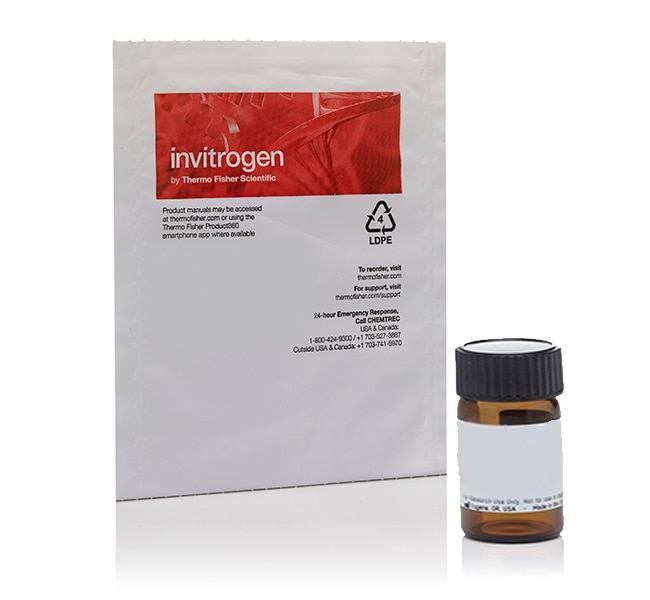Search Thermo Fisher Scientific

Dil Stain (1,1'-Dioctadecyl-3,3,3',3'-Tetramethylindocarbocyanine Perchlorate ('DiI'; DiIC18(3)))
| Catalog Number | Quantity |
|---|---|
| D3911 | 25 mg |
| D282 | 100 mg |
DiI is a lipophilic membrane stain that diffuses laterally to stain the entire cell. It is weakly fluorescent until incorporated into membranes. This orange/red-fluorescent dye, which is spectrally similar to tetramethylrhodamine, is often used as a long-term tracer for neuronal and other cells. DiI is also available as a solution (Cat. No. V-22885), as a paste (Cat. No. N-22880) or as a solid (Cat. No. D-282).
Prepare stock solutions of lipophilic tracers in dimethyl formamide (DMF), dimethylsulfoxide (DMSO), or ethanol at 1 to 2.5 mg/mL.
Figures



Customers who viewed this item also viewed
Documents & Downloads
Certificates
Safety Data Sheets
Product Information
Molecular Probes® Handbook
Frequently asked questions (FAQs)
This is expected. DiD (which is far-red fluorescent) is never as uniform as DiI (which is orange fluorescent). If uniformity is desired, try increasing the label time and concentration, but it still isn't likely to be as uniform as DiI. CellMask Deep Red Plasma Membrane stain is much more uniform and is about the same wavelength as DiD. However, if you intend to do cell tracking over days, CellMask stain has not been tried for that application.
Find additional tips, troubleshooting help, and resources within our Cell Analysis Support Center.
If the tracer you chose is a lipophilic dye and fix with methanol, the lipids are lost with the methanol. If you have to use methanol fixation then choose a tracer that will covalently bind to proteins in the neurons.
Find additional tips, troubleshooting help, and resources within our Cell Analysis Support Center.
Since these dyes insert into lipid membranes, any disruption of the membranes leads to loss of the dye. This includes permeabilization with detergents like Triton X-100 or organic solvents like methanol. Permeabilization is necessary for intracellular antibody labeling, leading to loss of the dye. Instead, a reactive dye such as CFDA SE should be used to allow for covalent attachment to cellular components, thus providing for better retention upon fixation and permeabilization.
Find additional tips, troubleshooting help, and resources within our Cell Analysis Support Center.
DiI is a lipophilic dye that resides mostly in lipids in the cell, when cells are permeabilized with detergent or fixed using alcohol this strips away the lipid and the dye. If permeabilization is required CM-DiI can be used because this binds covalently to proteins in the membrane; some signal is lost upon fixation/permeabilization, but enough signal should be retained to make detection possible.
Find additional tips, troubleshooting help, and resources within our Cell Analysis Support Center.
The transport is fairly slow, around 6 mm/day in live tissue and slower in fixed tissue, so diffusion of lipophilic carbocyanine tracers from the point of their application to the terminus of a neuron can take several days to weeks The FAST DiO and DiI analogs (which have unsaturated alkyl tails) can improve transport rate by around 50%.
Find additional tips, troubleshooting help, and resources within our Cell Analysis Support Center.
